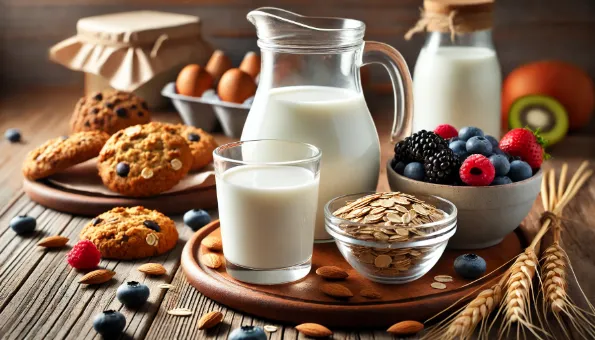Milk: Nutrition, Benefits and Uses
Milk is a source of protein, calcium and vitamins, important for bone health but may cause lactose intolerance in some people.

Introduction
Milk is one of the oldest and most widely consumed beverages in the world. It is obtained from cows, goats, sheep and other animals, with cow’s milk being the most common in modern diets. Besides being consumed fresh, milk is the base for many dairy products such as yogurt, cheese and butter.
Nutritional Values
Per 100 ml of whole cow’s milk: **61 kcal**, 3.2 g protein, 3.3 g fat, and 4.8 g carbohydrates (mainly lactose). Rich in **calcium**, vitamin D (if fortified), vitamin B12, riboflavin and phosphorus.
Benefits
- **Supports bone and dental health** thanks to calcium and vitamin D
- **Source of complete protein** essential for growth and tissue repair
- **Hydration and energy** in an easily digestible form
- **Versatile ingredient** in cooking and baking
Possible Drawbacks
- **Lactose intolerance** in people who do not produce enough lactase enzyme
- **Milk protein allergy** in children and adults
- Excessive consumption of whole milk may contribute to **high saturated fat intake**
Culinary Uses
Milk is used in drinks (coffee, cocoa, milkshakes), baked goods, desserts, soups, sauces and puddings. It is also the base for cheese, yogurt, kefir and butter production.
Fun Fact
Most adults worldwide do not drink milk due to genetic lactose intolerance, while populations in Europe and some parts of Africa have developed the ability to digest lactose into adulthood.
- 1. Milk
kravlje mlijeko

